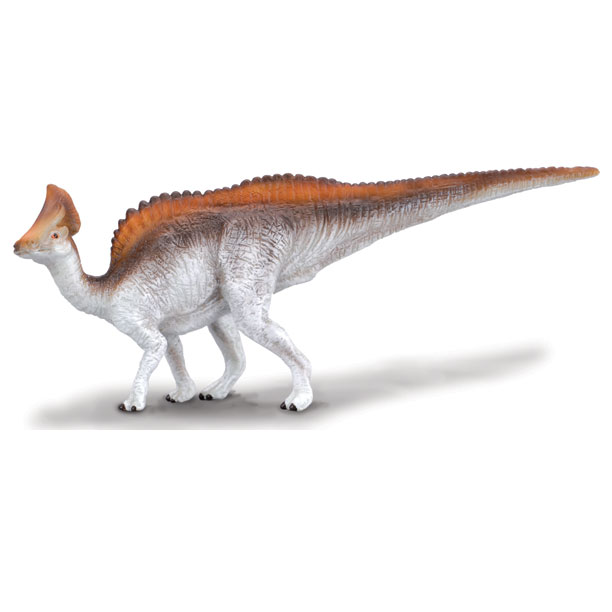New Olorotitan Specimen Discovered In Russia
New Olorotitan Fossils may Yield Information on Duck-billed Dinosaur Brains
Scientists working in the south-east of Russia have uncovered the fossilised remains of an Olorotitan, a large duck-billed dinosaur that lived during the very end of the Age of Reptiles. The fossils are so well preserved in their mudstone tomb, that the researchers hope to learn more about these particular dinosaurs and possibly get the chance to study how their brains functioned.
Olorotitan
Olorotitan lived during the Cretaceous (Maastrichtian faunal stage), it was a large, herbivorous dinosaur closely related to the North American lambeosaurines Corythosaurus and Hypacrosaurus.
A Model of Olorotitan (O. arharensis)
To view a model of Olorotitan and other dinosaur toys: CollectA Age of Dinosaurs Prehistoric Life Models.
Olorotitan was formally named and described in 2003, after the discovery of a nearly complete specimen eroding out of the banks of Amur River in the far southeast of Russia. The new dinosaur discovery is in the Russian region of Primorsky Krai, this location (Kundursky) has already yielded a number of vertebrate fossils.
Commenting on the discovery, Ivan Bolotsky, a junior research assistant at the Russian Academy of Sciences’ Institute of Geology and Natural Resource Use stated:
“While removing the bones of an Olorotitan from the Kundursky excavation site, we spotted a tooth of a carnivorous dinosaur stuck between the caudal vertebrae.”
The tooth lodged in the Olorotitan’s tail bones (caudal vertebrae) is a bonus for the scientists, it will help them build up a picture of the fauna in the area during the Late Cretaceous.
The remains of the dinosaurs were preserved as mudslides in the area buried the bones and permitted their preservation. The news release on the Olorotitan discovery explained that these fossils may represent some of the last types of dinosaur to have existed in Asia. The site may yield a number of pristine specimens as according to the news report, the fossil rich site may actually cover an area of 30 square kilometres or more.
The State of Fossil Preservation
Commenting on the state of fossil preservation, Yuri Bolotsky, chief of Palaeontology Laboratory at the Far Eastern regional branch of the Russian Academy of Sciences said:
“The dinosaurs have been preserved to such an extent that the orifices, outlets of cranial nerves and blood-vessels remained intact. This means we can analyse the brain structure of these animals.”
Yuri Bolotsky, was one of the original researchers on the first Olorotitan discoveries. He was part of the team that formally named and described Olorotitan in 2003.
If the researchers are able to examine the braincase of this particular lambeosaurine dinosaur, then it will contribute to the scientific data available on this branch of the hadrosaur family.


